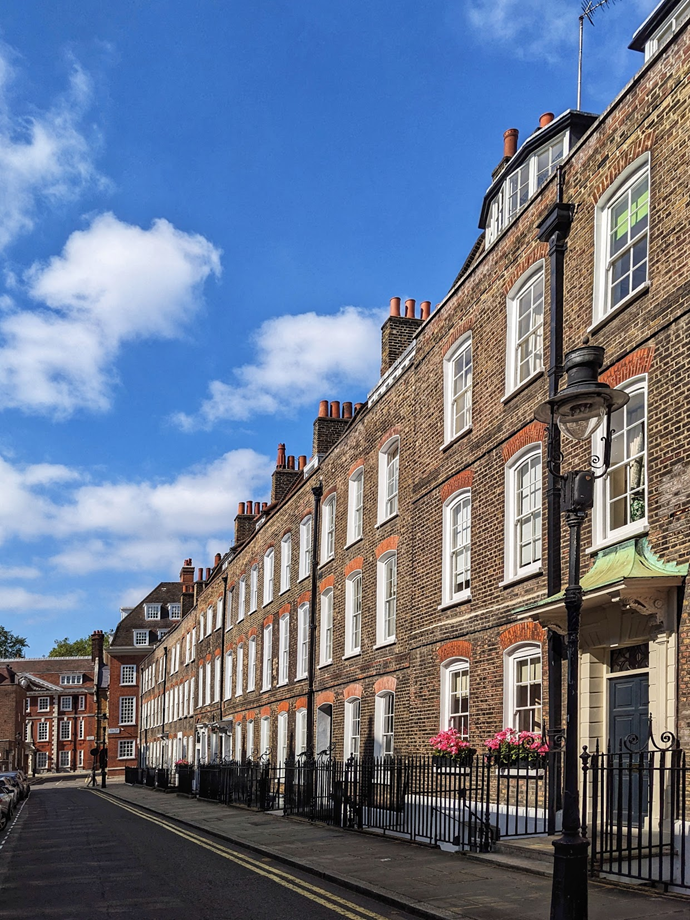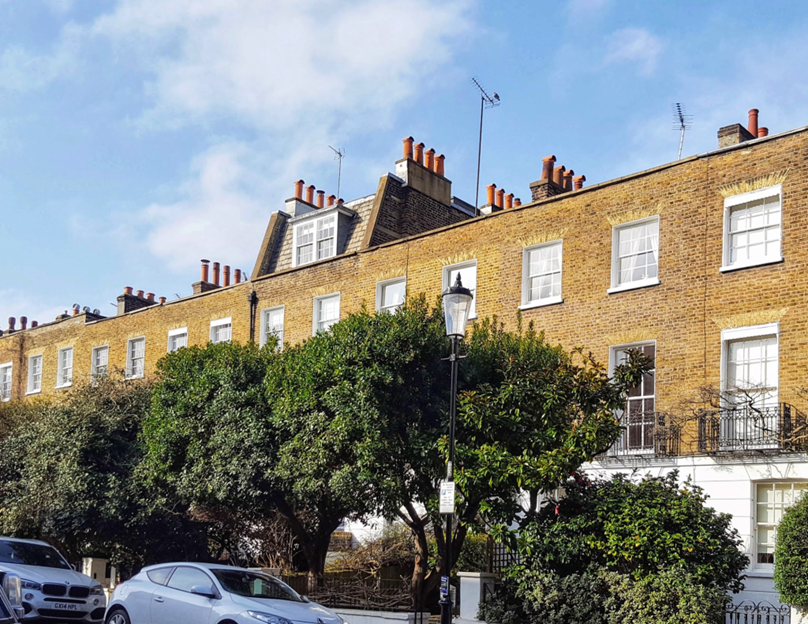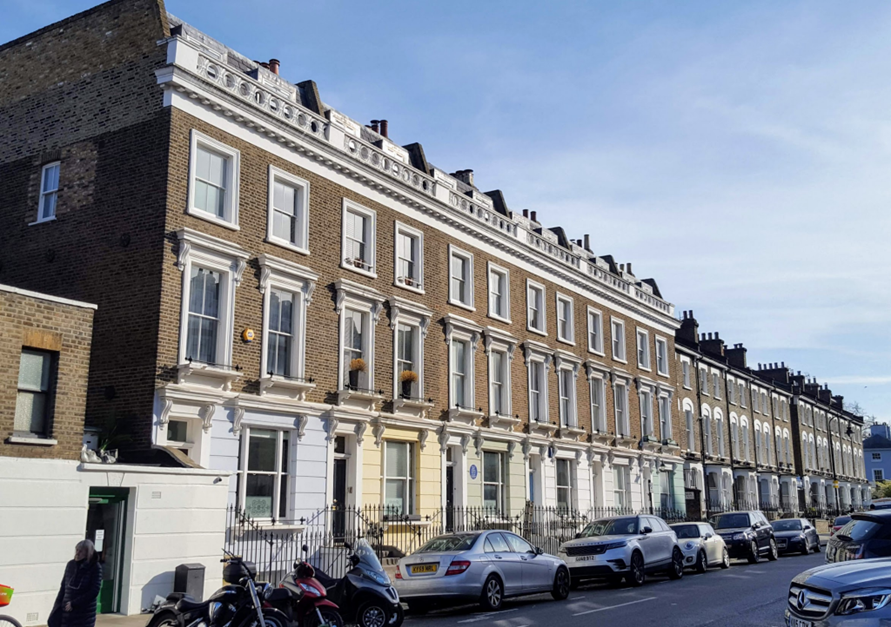Samuel Hughes, argues that we should preserve the new liberty to create mansards that ‘fit in’.
Mansard roofs are such a familiar feature of British streetscapes that most people barely notice them. A mansard is a double-pitch roof which creates usable living space over nearly the entire area of the building. They cost somewhat more than single-pitched roofs, so historically they were added only when floorspace values had risen above their build costs. This process went on slowly through the eighteenth and nineteenth centuries. Nobody has counted how many mansards there are, but they could be harmoniously added to most terraced houses from before about 1870, and perhaps half of such houses have already done so.

Although they add nearly a full floor, mansards impose very little ‘visual burden’ on the street. Indeed, they may be barely visible, as here.
Adding mansards has some obvious advantages. It typically increases the floorspace of a building by a quarter to a third, adding a substantial quantum of housing. Because Georgian and Victorian housing is typically in city centres, this contributes housing in the places that are least car dependent and often have the most acute housing scarcity. Because mansards are so discreet and familiar, it imposes very little visual burden. Admittedly, many mansards will enlarge existing homes rather than adding new ones. But additional storeys in inner urban areas are often used for new flats, or for lodgers, or to house relatives who would otherwise need their own homes.

A ‘sawtooth’ effect. Prohibiting the other houses from adding mansards means that this curious effect is frozen in place permanently.
More recently, however, adding mansards became rare. Demand for roof extensions seems to have ebbed during the depopulation of British inner cities in the twentieth century, and over time adding mansards was generally prohibited altogether by local authorities, perhaps out of concern for NIMBY pushback. Curiously, this often applied even to terraces that already had some mansards, freezing in place a ‘sawtooth’ effect. This would have surprised earlier generations, who would have assumed that the ‘sawtooth’ effect was a transitional phase as homeowners took advantage of the possibility of roof extensions.

Camden Council allowed these mansards to be added on condition that they were added simultaneously – which, amazingly, the residents managed to do
As housing scarcity has once again become acute, some local jurisdictions began revising this approach. In 2012, Camden Council permitted a terrace of houses in Primrose Hill to add mansards on condition of unanimous consent and simultaneous development. Remarkably, the terrace met this condition and duly added mansard roofs. In 2017, Tower Hamlets Council permitted carefully design-coded mansard extensions in one neighbourhood just south of Victoria Park. In this case, simultaneity was not required, so the houses are adding mansards gradually. In 2022, Pimlico’s Neighbourhood Plan created a presumption in favour of mansard extensions.
In 2023, however, a more dramatic change appeared, this time in national policy. Following a campaign by Create Streets, a new clause appeared in the NPPF (124(e)) explicitly permitting mansards on appropriate properties, provided that mansards emulate the style of mansards in the area at the time of the building’s construction. In recent months, a clutch of mansard applications have indeed been approved on appeal on the basis of this clause, for example this scheme in Gloucester Road and this scheme in Chesterton Road. The Inspectorate is now clearly implementing the intention of the NPPF that, under the specified circumstances, mansards should be approved. As this becomes generally known, it will filter through to planning decisions by councils. Interestingly, there has been no significant pushback: a carefully designed YIMBY reform has apparently bedded in without controversy.
The effects of this will be considerable. As recent appeals show, the NPPF clause applies both within and without conservation areas. This means that it will affect the bulk of pre-1870 terraced housing with no mansard already, including hundreds of thousands of homes. In some areas, of course, floorspace values will not be high enough to justify extensions. But in any relevant area of London, they are likely to do so. Once paragraph 124(e) becomes generally known, uptake in London and other unaffordable cities with Georgian and early Victorian housing is likely to be high. Over the next twenty years, we should expect to see mansards becoming more or less universal in the areas of London where they are common.
The mansard paragraph points to another interesting trend. In 2023, the Department introduced National Development Management Policies (NDMPs). NDMPs are national policies on development that trump local policies wherever they conflict, meaning that many details of development management that were previously set by England’s 300-some local planning authorities will be determined nationally. NDMPs appear to enjoy cross-party support, and the new Government is expected to continue the process of rolling them out.
No NDMPs have been published yet, and the mansard policy is just a normal NPPF policy. But it constitutes an intervention in development management at a level of detail that was traditionally uncommon: the Government decided that a certain highly specific kind of development was in the national interest and announced that it would henceforth be permitted everywhere. There are many more such interventions that a vigorously pro-growth government could make through NDMPs, some of which may indeed go much further than re-permitting a traditional type of roof extension. The mansard revolution may prove to be just a prelude. We should expect much more to come.
Dr Samuel Hughes is a fellow of Create Streets and has worked widely in housing, design and planning policy.

